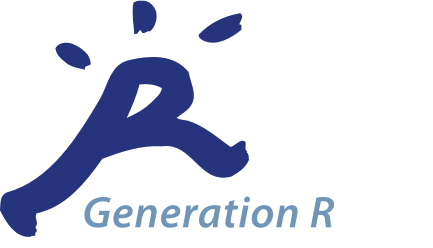-
measure Macarthur Communicative Development Inventory (MCDI)
Study: Generation R Mode of collection: SelfAdministeredQuestionnaire Available measurements: Main Cohort 1.5 yearsThe MacArthur Communicative Development Inventories (CDIs) are a pair of widely used parent-report instruments for assessing communicative skills in infants and toddlers. The CDIs are parent report instruments which capture important information about children's developing abilities in early language, including vocabulary comprehension, production,...Created May 3, 2023 • Updated May 3, 2023 -
measure Child Development Inventory (CDI)
Study: Generation R Mode of collection: SelfAdministeredQuestionnaire Available measurements: Main Cohort 6 months 1 year 1.5 years 2 years 3 years 4 yearsThe Brief Rating Inventory of Executive Function-Preschool Version (BRIEF-P) was administered to measure functions related to inhibition, shifting, emotional control, working memory and planning in preschool children in everyday life. Brief Rating Inventory of Executive Function (BRIEF) was administered, measuring inhibition, shifting, emotional...Created May 3, 2023 • Updated May 3, 2023 -
measure EEG Face Emotion
Study: YOUth Mode of collection: MeasurementsAndTests EEG Available measurements: Baby and Child 10 months 3 years 6 yearsTo understand how the developing brain differentially responds to viewing faces with different facial expressions (happy and fear), young children (from 10 months onwards) passively watch pictures of happy or fearful faces while we measure their EEG. Note that the same faces but with neutral expressions have been presented in EEG Face House experiment....Created March 28, 2023 • Updated March 30, 2023 -
measure EEG Coherence
Study: YOUth Mode of collection: MeasurementsAndTests EEG Available measurements: Baby and Child 5 months 10 months 3 years 6 yearsThis task serves two purposes: first, to observe how the developing brain signal decomposes into separate frequency bands as a function of what the child sees; second: to understand how the connectivity among different areas of the developing brain develops. Infants passively watch 60-second video clips depicting singing women or moving toys while we...Created March 28, 2023 • Updated March 30, 2023 -
measure Ages and Stages Questionnaire - Social-Emotional (ASQ-SE)
Study: YOUth Mode of collection: SelfAdministeredQuestionnaire Available measurements: Baby and Child 5 months 10 months 3 yearsThe Ages and Stages Questionnaire (ASQ) assessess childrens' skills in five developmental areas, including Communication, Fine Motor, Gross Motor, Problem-Solving, and Personal-Social. This developmental check-up is available for children between 2 and 60 months.Created March 28, 2023 • Updated March 30, 2023 -
measure Parent-Child Interaction (PCI)
Study: YOUth Mode of collection: Observation Available measurements: Baby and Child 5 months 10 months 3 years 6 yearsParent child interaction (PCI) is recorded to code qualitative aspects of the observed interaction between parent and child based on explicitly defined behaviors. The PCI consists of age appropriate structured tasks that include a common mildly stressful event (clean-up and a teaching task), and a pleasant event (unstructured free play).Created March 28, 2023 • Updated March 30, 2023 -
measure Gaze Cueing experiment
Study: YOUth Mode of collection: MeasurementsAndTests Eyetracking Available measurements: Baby and Child 5 months 10 months 3 years 6 years
Child and Adolescent 9 years 12 yearsThe social gaze task is an eye-tracking task that measures a subject's sensitivity to another person's gaze direction as a possible cue to predict the location of a next event. Sensitivity to gaze direction is taken as a marker of social competence. In a trial, children see a face with direct gaze, followed by an eye gaze shift to one side, followed by a...Created March 28, 2023 • Updated March 30, 2023 -
measure EEG Face House
Study: YOUth Mode of collection: MeasurementsAndTests EEG Available measurements: Baby and Child 5 months 10 months 3 years 6 yearsTo understand how the developing brain differentially responds to viewing pictures of faces vs. houses, infants or children up to the age of 6 passively watch pictures of (neutral) faces (12 faces repeated four times) and pictures of typical Dutch houses (also 12 x 4) while we measure their EEG. This task lasts 4 minutes.Created March 28, 2023 • Updated March 30, 2023 -
measure Infant Behavior Questionnaire Revised (IBQ-R)
Study: YOUth Mode of collection: SelfAdministeredQuestionnaire Available measurements: Baby and Child 5 months 10 months 3 years 6 yearsThe Infant Behavior Questionnaire (IBQ) and Infant Behavior Questionnaire-Revised (IBQ-R) have been designed to measure temperament in infants between the ages of 3 and 12 months. The IBQ assesses dimensions of temperament, such as: activity level, soothability, fear, distress to limitations, smiling and laughter, and duration of orienting, among...Created March 28, 2023 • Updated March 30, 2023 -
measure Comprehensive Early Childhood Parenting Questionnaire (CECPAQ)
Study: YOUth Mode of collection: SelfAdministeredQuestionnaire Available measurements: Baby and Child 5 months 10 months 3 years 6 yearsThe Comprehensive Early Childhood Parenting Questionnaire (CECPAQ) was developed to assess the behavior of parents towards their young child (1-5 years). The CECPAQ is a parent report measure of commonly occurring behaviors in five domains of parenting (i.e., support, stimulation, structure, harsh discipline, and positive discipline).Created March 28, 2023 • Updated March 30, 2023 -
measure Infant Face Popout
Study: YOUth Mode of collection: MeasurementsAndTests Eyetracking Available measurements: Baby and Child 5 months 10 months 3 years 6 yearsShortened version of the face-pop out experiment (Gliga et al, 2009 Exp1; Elsabbagh et al., 2013): free viewing experiment in which children are presented with multiple five-item arrays (always: 1. Human face; 2. Car; 3. Mobile phone; 4. Bird; 5; Face-shaped noise figure). It tests whether children automatically orient to faces and whether they prefer to...Created March 28, 2023 • Updated March 30, 2023 -
measure Macarthur Communicative Development Inventory (MCDI)
Study: YOUth Mode of collection: SelfAdministeredQuestionnaire Available measurements: Baby and Child 10 months 3 yearsThe MacArthur Communicative Development Inventories (CDIs) are a pair of widely used parent-report instruments for assessing communicative skills in infants and toddlers. The CDIs are parent report instruments which capture important information about children's developing abilities in early language, including vocabulary comprehension, production,...Created March 28, 2023 • Updated March 30, 2023


